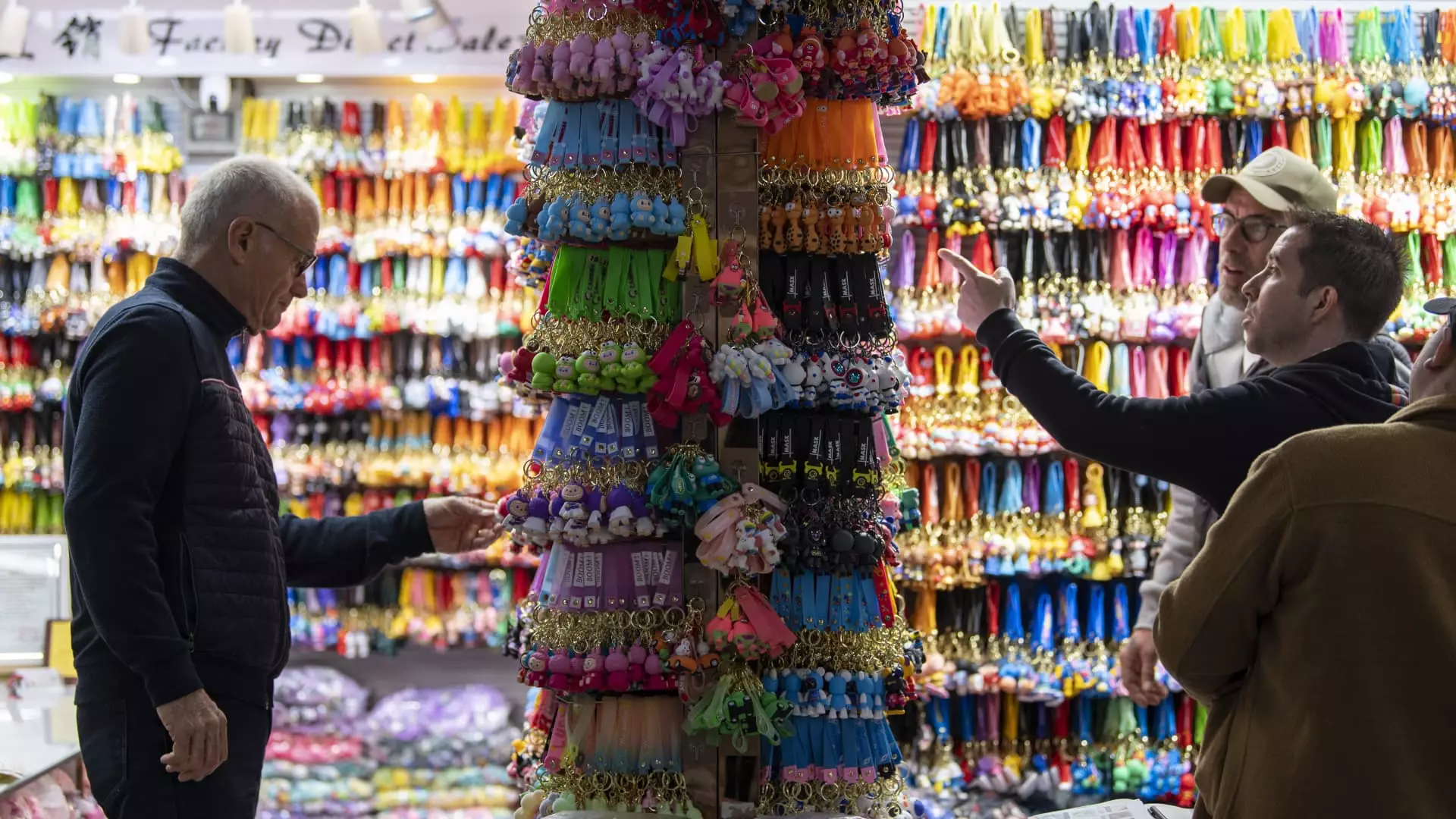The phenomenon known as “Christmas creep” has become a rather paradoxical force in the retail realm, transforming America’s approach to holiday shopping. Each year, we see Christmas merchandise making its grand debut on store shelves earlier than ever, as retailers scramble to capture the lucrative holiday market. Yet, lurking behind this seemingly benign trend lies a darker narrative influenced by government policies, particularly tariffs introduced by the previous administration. As U.S. President Donald Trump initiated staggering tariffs on Chinese imports—soaring from an initial 34% to a monumental 145%—the delicate dance of supply chains suddenly became a hazardous game.
The emergence of these tariffs has had tangible ramifications for U.S. retailers, pushing many to halt orders and effectively placing Chinese manufacturers in limbo. In this high-stakes environment, businesses are balancing urgency against uncertainty, creating a recipe for chaos just as the holiday season approaches. Retailers now find themselves in a treacherous position, where failing to act could mean empty shelves come Black Friday, while acting prematurely could mean trapped capital and logistics dilemmas.
The Fragile State of Supply Chains
As the tariffs took shape, the impact rippled far beyond individual products. For instance, a mere pause in spoon production could trigger a series of adverse effects cascading through various sectors—steel production, iron ore smelting, and beyond. The interconnectedness of global supply chains has never been more apparent, illustrating that disruptions in one corner can paralyze another. Cameron Johnson, a consultant with Tidalwave Solutions, aptly highlighted this fragility, demonstrating that it’s not just retail that stands to suffer; entire industries hang in the balance.
Despite some factories reopening their doors in response to looming deadlines dictated by the holiday calendar, the uncertainty surrounding tariffs creates an environment ripe for hesitancy. As a result, many U.S. companies have adopted a strategy of frontloading—stockpiling inventory in anticipation of price hikes. However, as shipments from China plummet, we enter a phase where the waiting game becomes the status quo—a dangerous place to be as we approach peak shopping months.
The Tariff Gamble: Risks vs. Rewards
To stash or not to stash? That has become a central question for many retailers. While some companies continue to fill their warehouses, others are operating under a cloak of skepticism. Reports indicate that numerous retailers are tempering their orders, hopeful for a reduction in tariffs that may or may not materialize. This cautious outlook seems prudent; however, it inadvertently contributes to a climate of uncertainty that could escalate into panic.
The economics of this collection of adversities only serve to stoke the flames of urgency. In recent weeks, canceled shipments have surged dramatically, resulting in severe bottlenecks that threaten to strangle the flow of goods just as the holiday excitement builds. It brings to mind a powerful dilemma: Is it worth waiting in hopes of calmer seas, or should companies act boldly and risk escalating costs? As we draw nearer to a critical juncture, the balance of power in U.S.-China trade negotiations will undeniably shape these decisions.
Adapting to Stay Ahead
In an age of uncertainty, a degree of innovation becomes essential for survival. Some businesses are finding unique ways to navigate these tumultuous waters, shifting strategies to accommodate the current climate. For example, numerous retailers are now placing smaller orders, banking on a potential drop in tariffs while still ensuring that their product lines do not fall into disarray. This adaptive approach reflects a level of agility that is commendable yet fraught with risk.
The recent executive orders granting tariff relief on select sectors, such as pharmaceuticals and semiconductors, reveal a nuanced landscape wherein companies like Walmart and Target have signaled a readiness to resume their production lines. The delicate interplay between federal policy changes and corporate responsiveness ultimately will be the determining factor that shapes this holiday shopping season.
The Cost of Holiday Ignorance
What repercussions will this pandemonium have on the consumer experience? The specter of empty shelves coupled with an inability to meet holiday demand casts a long shadow over the season that traditionally embodies abundance and joy. As consumers gear up for their holiday shopping, many may feel the pinch of higher prices or limited availability—an unfortunate byproduct of a complex web of tariffs, shipping delays, and misaligned expectations.
This year’s holiday season could become a tragic case study in how economic policy can fracture consumer experience, illustrating that Christmas creep is not merely a quirky retail trend but rather an indication of deeper economic tensions. Retailers must strike a careful balance, or risk not just a lackluster sales season but also long-term ramifications for their brand loyalty and consumer trust. The reality is that in a climate colored by uncertainty, the stakes could not be higher.

